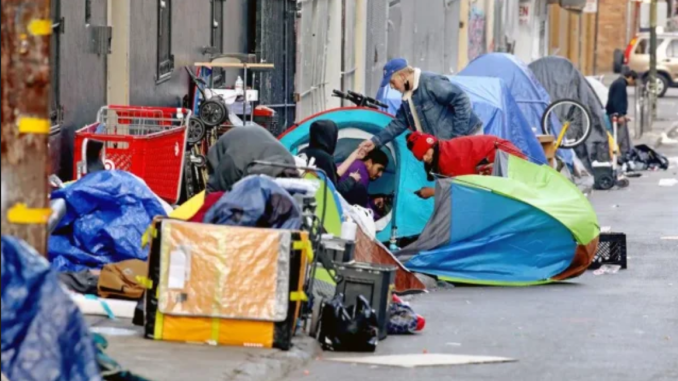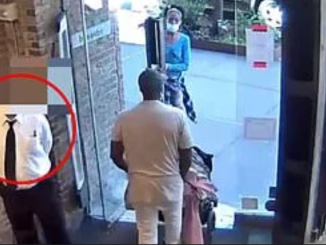
The San Francisco Chronicle conducted a comprehensive survey between June and July of over 1,650 people to “measure attitudes on what’s working, what isn’t, performance of city government, the future of the city and more.” Respondents overwhelming indicated that a great deal isn’t working, the city is performing poorly, the future looks bleak, and it may not be worth hanging around much longer.
The results
65% of respondents said the city, run by Democrat Mayor London Breed, was worse than when they first moved there. Only 10% said it was better.
Women reportedly found the city to be worse than did their male counterparts, with 69% reporting a significant deterioration (representing a seven-point gendered change) and only 7% noting there being signs of improvement.
35% of respondents believe things will only be worse two years from now. 43% suggested it will be as bad as it is today.
Between July 1, 2020, and July 1, 2021, over 128,870 fled San Francisco. This exodus represented a numeric decline of 6.7%, the sixth-highest decline in the country during that period. The Chronicle’s poll indicated that trend may continue.
37% of current residents plan to be living somewhere beside San Francisco in three-years time. The diaspora will be overrepresented by those in the 18-34 age group, 54% of which suggested they wanted out.
Those who stay might express their frustration by other means.
Last month, a collective of shops in the city threatened not to pay their taxes, citing the city’s failure to get a grip on rising crime and homelessness. Dave Karraker, Co-President of the Castro Merchants Association, told KRON4 “Business owners stop paying taxes and stop paying the fees for licenses because the city is not providing the services that are supposed to be guaranteed based on what we’re paying to the city.”
Those businesses that Karraker represents, which have been subjected to burglaries are not alone.
45% of respondents told the Chronicle that they had been robbed over the past five years.
Michael Yaki, a former city supervisor, told the Chronicle “that’s extraordinarily high … When a car is broken into, and things have been stolen, there’s a sense of personal violation.”
Fewer people, although not an insignificant percentage (24%) of San Franciscans, reported being threatened with physical violence or outright attacked.
The cause
San Francisco, the location of Democrat House Speaker Nancy Pelosi’s multi-million-dollar mansion, suffers a multitude of problems. Homelessness is chief among them.
According to a 2022 point-in-time homeless count, there are 7,754 homeless people in San Francisco. However, the Department of Homelessness and Supportive Housing (HSH) has indicated that number may be closer to 20,000 people, comprising 2.5% of the city’s population — this despite the city increasing the HSH’s budget three-fold since 2016.
The city’s worsening crime problem, as partially reflected by the reported victimization in the Chronicle survey, is also a pressing issue.
San Francisco scores a 4 on Neighborhood Scout’s crime index (100 being the safest). While the chances of becoming a victim of a violent crime in the Democrat-run city are 1 in 178, the chances of being the victim of a burglary, theft or carjacking is 1 in 22.
According to the San Francisco Police Department, so far this year there have been:
23,587 crimes of theft or larceny;
209 crimes of arson;
4,222 carjackings;
4,086 burglaries;
1,804 assaults;
1,634 robberies;
170 rapes; and
36 murders.
Problems with crime have long been exacerbated at the state level.
Democrats’ Proposition 47, for instance, effectively decriminalized shoplifting, whereby thefts of goods collectively valued at under $950 are treated as nonviolent misdemeanors and rarely prosecuted.
Sometimes those who attempt to stop such crimes in the city are ostracized, as in the case of one Walgreens employee who, having tried to stop a robbery, was roundly condemned online in July.
Last year, amidst a spike in homicides and assaults, former San Francisco police commissioner Joe Alioto Veronese suggested the city had descended into “a state of chaos and anarchy.”
In 2020, Breed, the city’s Democrat mayor, announced a $120 million cut from the police department’s budget, despite having enjoyed personal armed protection in the previous five years to the tune of $12.4 million.
At the time, the president of the S.F. Police Officer’s Association, Tony Montoya, said that Breed’s decision “could impact our ability to respond to emergencies.”
Fox News Digital indicated that Breed’s decision ultimately proved ruinous and Montoya correct. Homicides in the first year of the city’s police defunding increased by 20% over 2019, and burglaries increased by 47% over the three previous years.
With out-of-control crime and homelessness, the city has undergone a deadening.
A recent study conducted by the Institute of Governmental Studies at U.C. Berkeley revealed that in the spring of 2022, the city’s downtown was only 31% active. The study also showed that the four other cities with the worst post-pandemic recoveries were all similarly Democrat-run.
In the deadened city, drug abuse is rampant. In 2020, there were over 700 drug overdoses. Last year, there were over 640 overdoses. Altogether, there have been nearly 1,700 overdose deaths in the city since January 2020.
Those who indicated they would soon flee San Francisco will be leaving behind worsening crime and homelessness, a fetid waterfront, and a anemic downtown that serves as an epicenter for a tragic drug crisis.
* Article from: The Blaze


